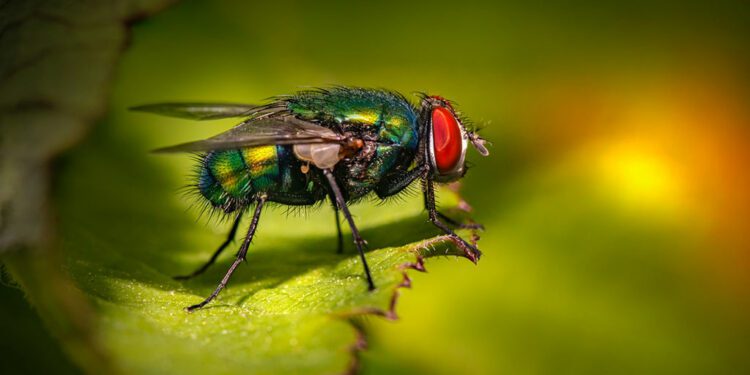Global Biodefense April 11, 2022
Blow flies sample the environment as they search for water and food sources and can be trapped from kilometers away using baited traps. Under a program sponsored by DARPA a team of researchers at Indiana University-Purdue University investigated blow flies as environmental chemical sample collectors following a chemical warfare attack (CWA). They exposed three species of blow flies to CWA simulants dimethyl methylphosphonate and diethyl phosphoramidate as well as the pesticide dichlorvos, followed by treatment-dependent temperature and humidity conditions to determine the persistence and detectability of these compounds under varying environmental conditions. Flies were sacrificed at intervals within a 14-day postexposure period. Fly guts were extracted and analyzed. The amount of CWA simulant in fly guts decreased with time following exposure but were detectable 14 days following exposure, giving a long window of detectability. In addition to the analysis of CWA simulants, isopropyl methylphosphonic acid, the hydrolysis product of sarin, was also detected in blow flies 14 days post exposure. The work demonstrates the potential to obtain valuable samples from remote or access-restricted areas without risking lives…read more. TECHNICAL ARTICLE
